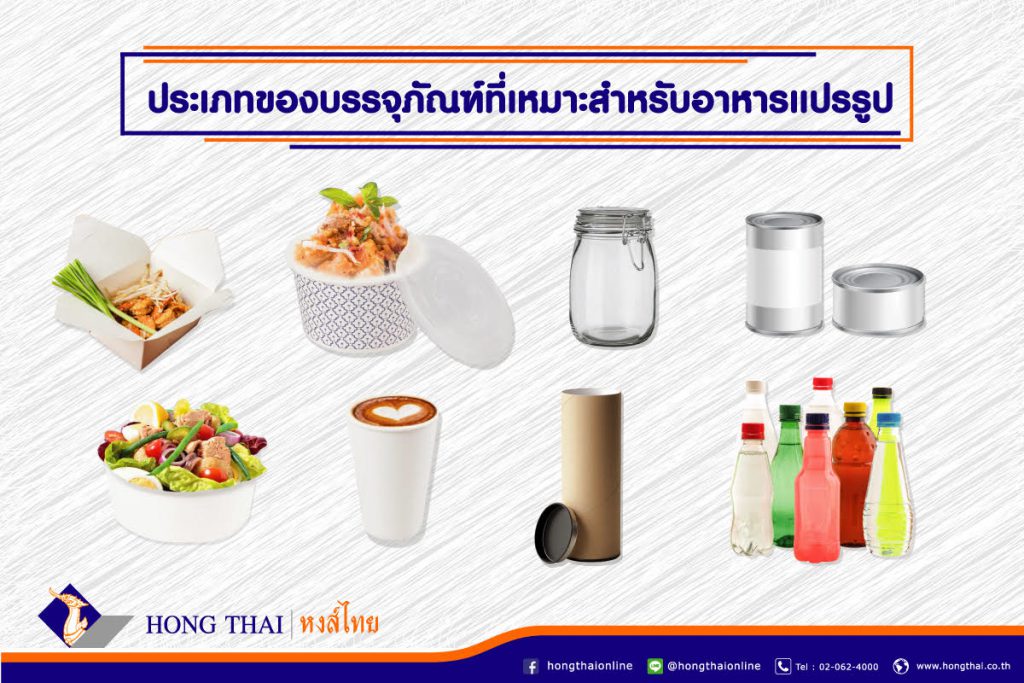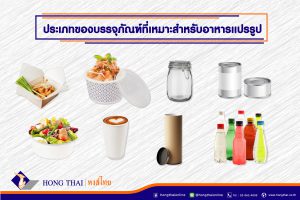Food and beverage packaging comes in various types and is made from different materials such as plastic, paper pulp, metal, or glass. These packaging materials have distinct advantages and disadvantages, especially for food products where safety from contaminants must be prioritized, as well as considering the costs that impact production expenses.
Packaging Suitable for Processed Foods
Food processing refers to the procedures that transform natural food into a new form, often to improve safety, extend shelf life, or create a branded product. Common processing methods for SME businesses include canning, freezing, refrigeration, dehydration, sugar preservation, drying, and pasteurization. Therefore, the packaging for processed foods must not only be suitable for the product and ensure safety but also stand out with an attractive design. Eco-friendly packaging has become popular in this regard.
Popular Types of Food Packaging Used in the Processed Food Industry
1. Paperboard Tube Boxes
Paperboard tube boxes are a popular food packaging option, available in various forms and with distinct properties. Designing a packaging structure with durability helps protect the product’s quality during transport and distribution. For processed products requiring refrigeration or freezing, the packaging should be coated with water- and moisture-resistant materials such as wax or plastic.
2. Paperboard Tray Boxes
Paperboard tray boxes are widely used for food and beverage packaging and come in two common types:
- Foldable trays that can be assembled and used immediately.
- Shaped trays with various forms, depending on the design and creativity of the designer or the business owner.
3. Cardboard Packaging
Choosing cardboard packaging for processed food products allows consumers to see the product inside. This type of packaging consists of a sheet of paper and a sheet of plastic that can be molded or unformed. These two materials are fused together, with the product placed in the center. There are two main types of this packaging: Blister Pack and Skin Pack.
4. Die-Cut Shaped Boxes
Die-cut shaped boxes are custom-designed food and beverage packaging, created according to the business owner’s specifications or the product’s requirements. For example, a paperboard box used for packaging milk with 12 boxes and handles.
5. Plastic Cans or Plastic Pouches
Other popular packaging options for processed products include plastic cans, pouches, plastic cylinders, metal cans, paper cans, and clear plastic trays with lids.
For SME businesses selling processed food products, understanding the types of packaging suitable for processed foods will make it easier to order or design packaging that fits the product appropriately.






